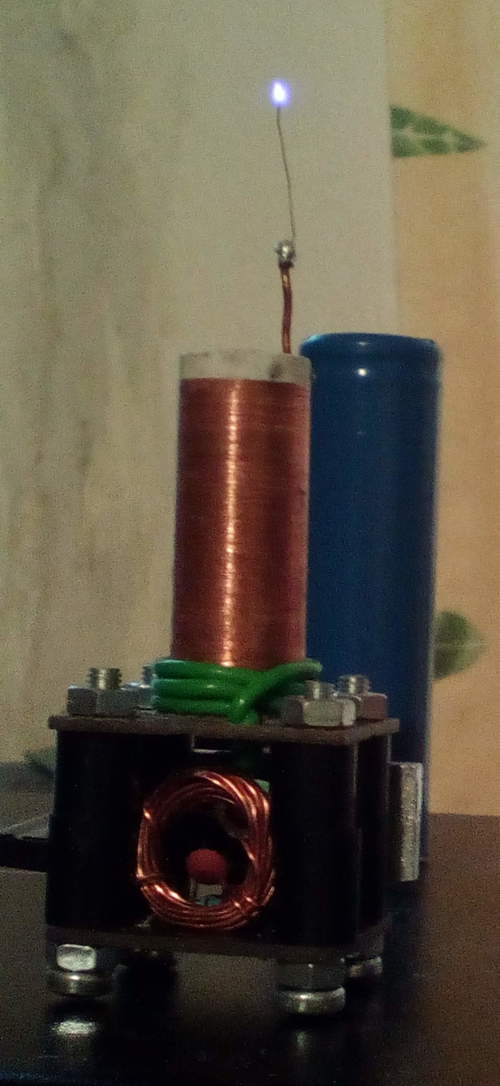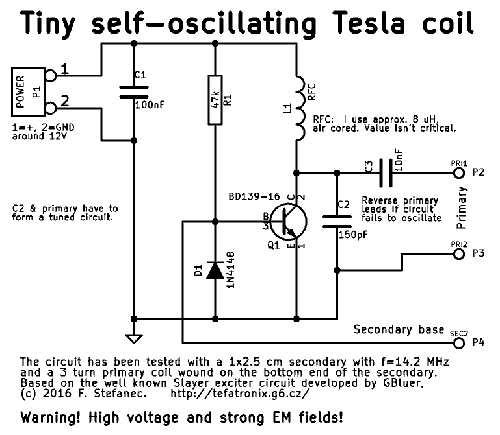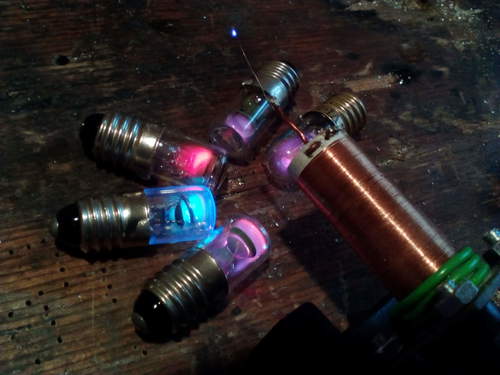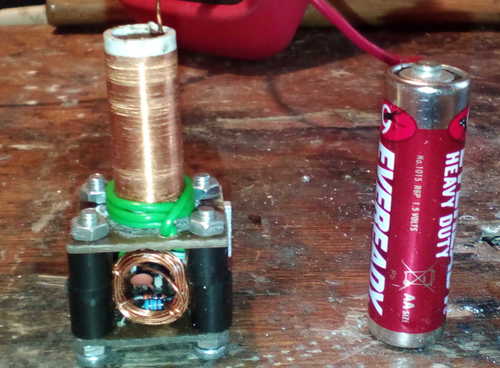DISCLAIMER! High voltages are present in this device, strong electromagnetic fields are emitted during operation. The device should NEVER be run without proper shielding. I refuse to take ANY responsibility for any possible injuries, legal problems, property damage or deaths, anything you find here is provided WITHOUT ANY WARRANTY, you do everything AT YOUR VERY OWN RISK!

The entire device, input voltage: 20 V (click for full resolution)
This is a very small semiconductor-driven Tesla coil. The circuit is very similar to the well-known "Slayer exciter" circuit. It's really small and not very powerful, but still powerful enough to create a small plasma flame discharge and light up fluorescent lamps.

Circuit diagram (click for full resolution)
Power input is connected to the connector P1. The coils are connected to P2, P3, P4 - primary coil to P2, P3, secondary base to P4.
Resistor R1 is used to start the oscillation (which gets initiated by transient effects and noise in the circuit and sustained by the resonant circuit). Once oscillation is established, the circuit oscillates at the secondary coil's resonant frequency, given by its inductance and (parasitic) capacitance.
The output part of this circuit operates in class E. C2 has to form a tuned circuit with the primary coil. I use 150 pF in my device and it works well. It's also a good idea to tune the coupling between the primary and secondary. The inductance of L1 isn't critical, I use an air cored coil with an inductance of around 8 µH. It should have a much higher inductance than the primary coil.
The secondary coil (in my device) is wound on a 30 mm long tube with a diameter of 10 mm. The primary coil consists of 3 turns wound around the secondary base.
The transistor has to be properly heatsinked!

Various small neon lamps (click for full resolution)

The device compared to a regular AA battery (click for full resolution)